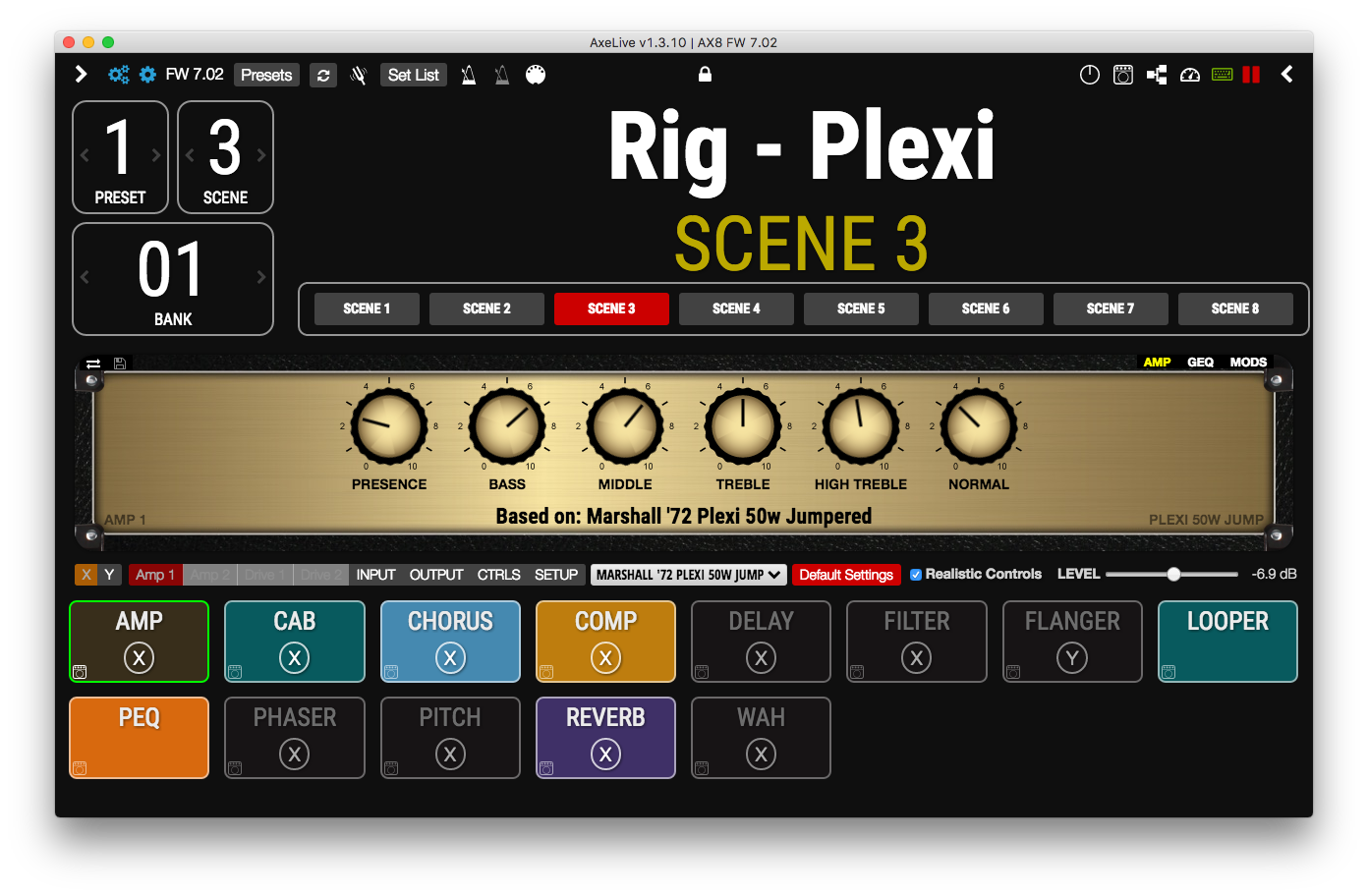Hi .
this is my main wish that controls in the amp block react with the exact same course that the original one .
We already talked about it sometimes but I still don’t understand why it’s not like that already . questions and feelings :
1/ I am not convinced about the “different” course button between 2 real amps . I don’t think that for example a jcm800 got sometimes eq buttons very reactive and sometimes not . The difference can exist , but it’s not that huge .
2/ so why called it a “Marshall jcm 800” simulation if you don’t give to musicians (who want to sell their amp and go with axe), the only thing they may know if they tried or have one : turning the buttons .
3/ how can we consider all the internal things in the circuit that we will never understand , give us 100 controls by amps but snob in the true control visual of the head . I mean if I want to reproduce a car , I won’t put 6 speed if it has 5, or choose to make it “automatic” because I prefer it .
4/ so if it is not the goal of the axe to be a high fidelity modeler , why just call all the amps fas A , fas B etc better than use real names in disguise?
5/ having real visual buttons don’t mean that we cannot have all the tweaks and options in other parts .
all apologies for the English mistakes , I am not . I am not attacking anyone and surely not cliff that knows a lotttt things that I don’t know . But as he sells it to musicians , not physicians, I just wanted to share my opinion as a ... musician .
this is my main wish that controls in the amp block react with the exact same course that the original one .
We already talked about it sometimes but I still don’t understand why it’s not like that already . questions and feelings :
1/ I am not convinced about the “different” course button between 2 real amps . I don’t think that for example a jcm800 got sometimes eq buttons very reactive and sometimes not . The difference can exist , but it’s not that huge .
2/ so why called it a “Marshall jcm 800” simulation if you don’t give to musicians (who want to sell their amp and go with axe), the only thing they may know if they tried or have one : turning the buttons .
3/ how can we consider all the internal things in the circuit that we will never understand , give us 100 controls by amps but snob in the true control visual of the head . I mean if I want to reproduce a car , I won’t put 6 speed if it has 5, or choose to make it “automatic” because I prefer it .
4/ so if it is not the goal of the axe to be a high fidelity modeler , why just call all the amps fas A , fas B etc better than use real names in disguise?
5/ having real visual buttons don’t mean that we cannot have all the tweaks and options in other parts .
all apologies for the English mistakes , I am not . I am not attacking anyone and surely not cliff that knows a lotttt things that I don’t know . But as he sells it to musicians , not physicians, I just wanted to share my opinion as a ... musician .


